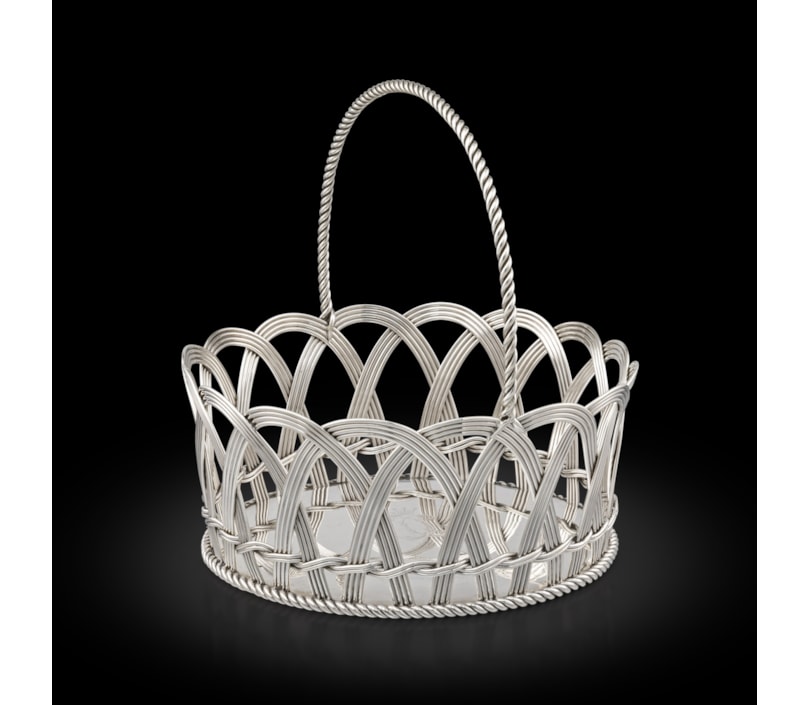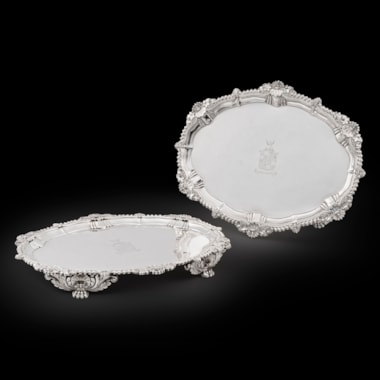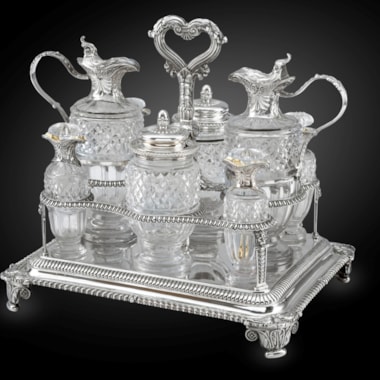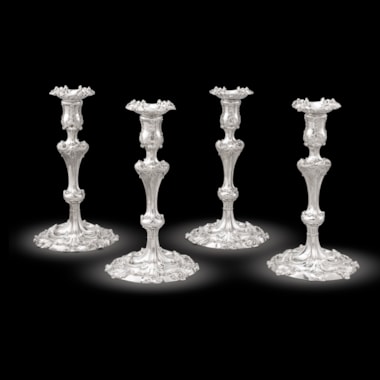The commission was probably done with an eye towards the political career of his son and heir Henry, Viscount Cornbury. After flirting with Jacobite conspiracies in the early 1730s, the Viscount married in 1737 Frances Lee, daughter of George, 2nd Earl of Lichfield. The same year, he was elected M.P. for Oxford University, a position he held until 1750, when a writ in acceleration on his father’s title of Baron Hyde allowed him a seat in the House of Lords. However, Henry died in Paris in 1753 and his father six months later; much of the Crespin silver passed to the Earl’s granddaughter Charlotte, whose husband Thomas Villiers was made Earl of Clarendon of the second creation in 1776.
This basket belongs to an important group of silver by Crespin for Henry, 2nd Earl of Rochester and 4th Earl of Clarendon (1672-1753), made between 1746 and 1749. The group also included two gilt cups and covers, a shell-shaped shaving dish, four waiters, six double spice boxes with ten spoons and four candlesticks. While the Earl was not young, he still retained his residence at no. 15, St. James Square.
Born in Westminster to Huguenot parents, Crespin was apprenticed to Jean Pons in 1713. His first marks were entered between 1720 and 1721, when he was described as being free of the Company of Longe Bowe String Makers. From 1720 until about 1760 Crespin conducted business from his address in Compton Street, Soho. He then retired with his wife and daughter to Southampton, where he died at the age of seventy-six. From the outset of his career Crespin distinguished himself as a goldsmith of the greatest ability, attracting patronage from the sovereigns of England, Portugal, and Russia. Although his was apparently a less prolific workshop than Paul de Lamerie's, his most important clients, such as the Prince of Wales and the dukes of Devonshire, Marlborough, and Portland, give some indication of the strength of his reputation. While some of his surviving works, such as the soup tureen of 1740 in the Toledo Museum (Grimwade 1974, pl. 25), testify to his outstanding skills, many of his greatest pieces, such as a "fine silver bathing vessel" made for the king of Portugal in 1724, have been lost.
You May Also Like








































































